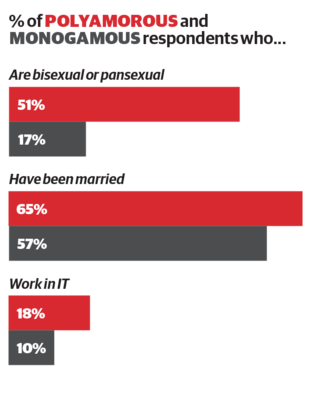Who Is Polyamorous?
For an increasingly visible group, the rules of love have changed.
By Gordon Waldman published September 6, 2018 - last reviewed on November 5, 2018

Monogamy has long dominated romantic relationships in the United States, but for an increasingly visible group, the rules have changed. A new study is one of the first to compare monogamous people with those who embrace polyamory—having more than one partner, with the consent of all parties.
The researchers collected online survey data from more than 3,000 people living in the U.S. The results show, among other things, that polyamorous respondents were more likely to identify as bisexual, pansexual (attracted to people regardless of their sex or gender identity), transgender, and multiethnic—and, interestingly enough, to work in the field of information technology. They were less likely to be Christian or to work in education. Polyamorous participants also more frequently selected the "other" option when answering questions about their gender identity, sexual orientation, and religious affiliation.
The sample was not nationally representative, but the results could underscore a broader resistance among polyamorous people to letting social norms define them, according to lead author Rhonda Balzarini, a doctoral candidate at The University of Western Ontario. Still, in some ways the two groups proved to be "more similar than you might think," she says: They did not, for example, differ significantly in age, number of children, or parents' religious affiliation.
